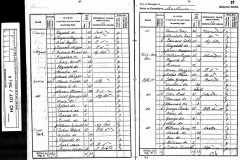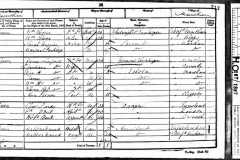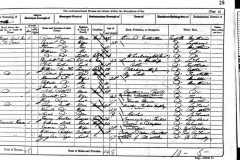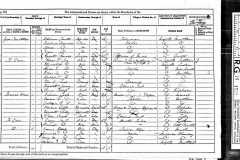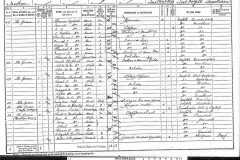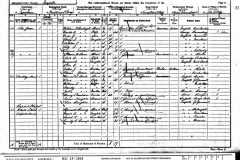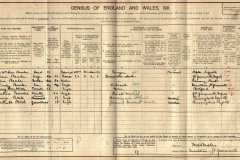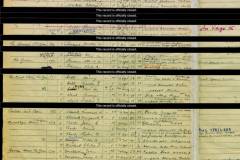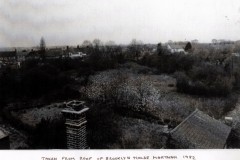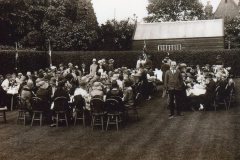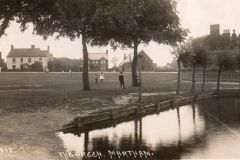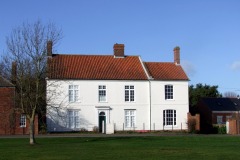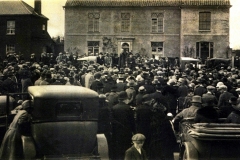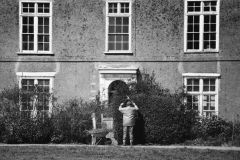Brooklyn House, The Green, Martham
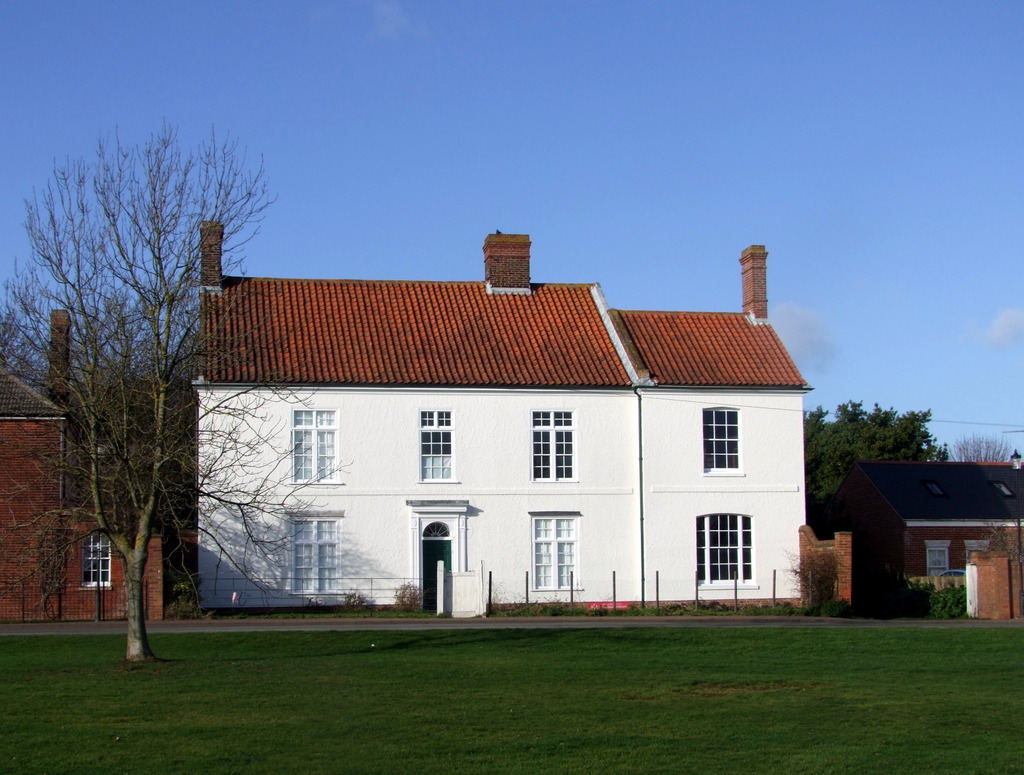
Brooklyn House has proudly stood for over two centuries to the north of Martham Village Green.
Its walls have listened to children’s laughter, tales of war, vicars praying, bankers counting, schoolboys chattering, servants bells ringing, gardeners clipping, newborns crying and last gasps of dying.
Its lofty windows have kept watch over the Green for over 220 years seeing a new road bisecting the Green, sheep grazing, ranters preaching, fairs, carnivals, Victoria’s Jubilee celebrations, rutted roads tarmacked, new footpath between house and road, trenches for water and sewage, arrival of telephones and electricity.
The house became a grade II listed building on 4th December 1987*. It stands on the north side of the Village Green fronting the B1152 at map reference TG4518. The Grade II listing says it was built in the late 1700’s of roughcast brick with a pantiled roof. It has two storeys in three bays and a central panelled front door rising to a circular arch with a six vaned fanlight above the door. The door case is panelled with reeded support columns. Over the door is a single light sash window. There are double transomed sash windows with glazing bars. Over each window is a horizontal border architrave. The roof is gabled and has an internal chimney stack to the west end. When it was listed there was a single storey extension to the east which was used by Lloyds Bank but the extension, with a single window at the front, was not included in the listing. (*Source. Historic England Ref ID 227696).
Who built Brooklyn House?
There is no record of who built the house. There is no great family associated with Martham over several generations and likewise this grand house does not seem to have been associated with one family for multiple generations. The earliest recorded occupier was Charles Boutell in 1812, and in 1832 records show he was the owner.
1812 Inclosure Award
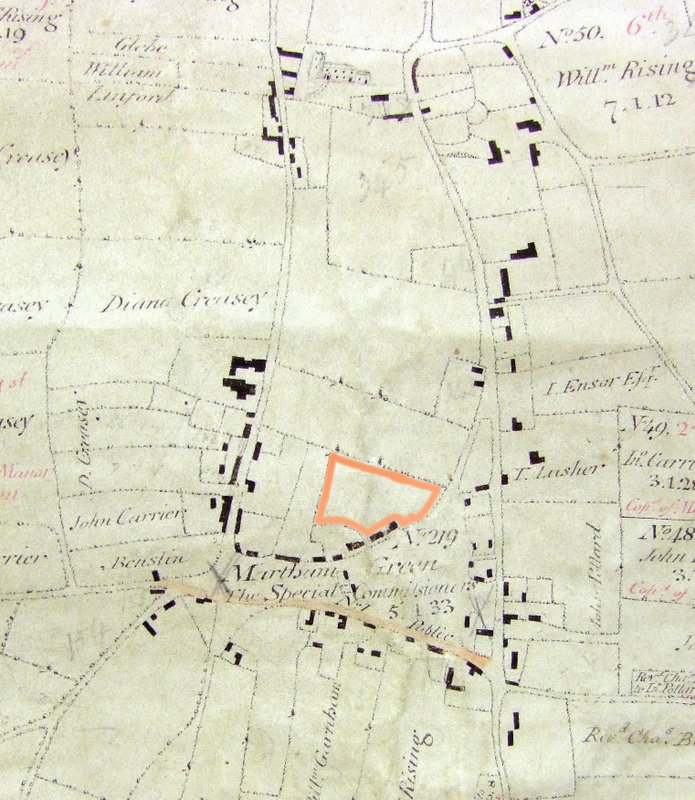
The earliest available formal map that shows Brooklyn House is the 1812 Inclosure Award shown on the left. The plot that includes Brooklyn House is outlined in pink. The lists that accompany the Award map show that the plot was owned by Rev. Charles Boutell. Notice that the plot includes a vacant area that many years later would become the site of the present Baptist Church.
There is also a unique Martham record that shows the house in a curious little journal written by Robert Porter called the “Strangers Guide to the Polite Village of Martham”. Robert was the Schoolmaster and Parish Clerk for many years and wrote his somewhat jocular book in 1830. In one part of it he describes his journey arriving at Martham from Hemsby and goes on to mention some of the larger properties around the Green. He does not explicitly mention Brooklyn House but a little hand drawn illustrated map in the book shows Brooklyn House as one of a set of houses to the north of the Green in the same position as the 1812 Inclosure Award Map. His sketch map is shown on the right.
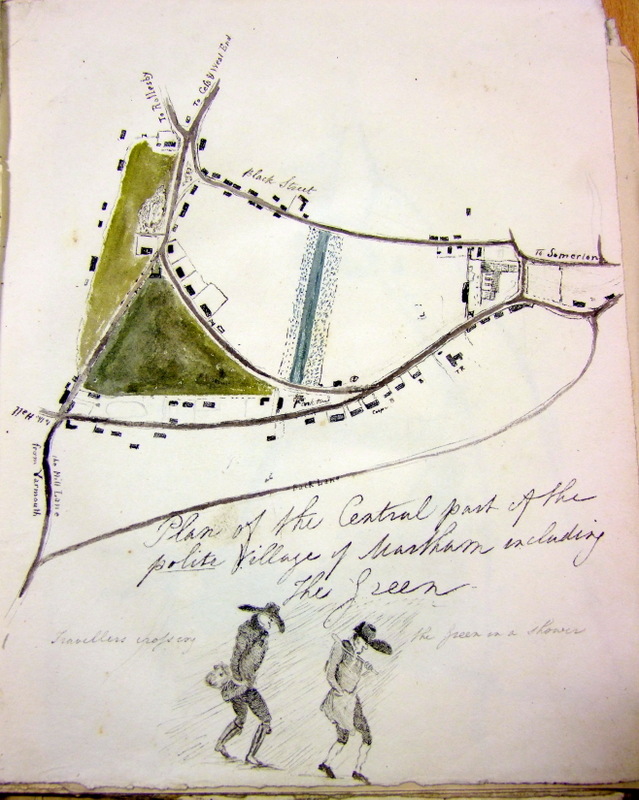
1841
Charles and his wife Mary also appear in the 1841 census – see below half way down on the left hand side – as living at the Green in Martham which was certainly at Brooklyn House although it is not named as such on the census form. They left Martham before 1851 when the census for the year listed them as living in Litchham so they lived at Brooklyn House for over 30 years.
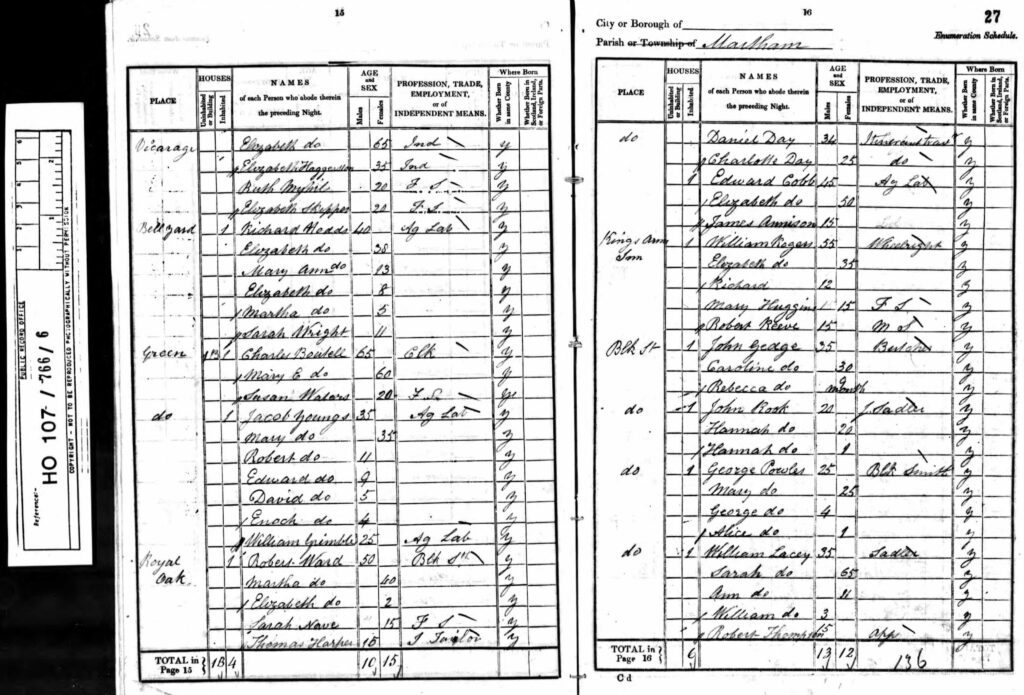
|
Rev. Charles Boutell was born about 1771 in Tittleshall, Norfolk. He married Mary Elizabeth Day on 18th April 1797 at St George, Colegate, Norwich. Mary was born in about 1779 at Woodbastwick. In 1809 he became the Curate at Repps with Bastwick and in 1812 they lived at Brooklyn House and they were still there in 1841 according to the census of that year. They left Martham sometime before 1851 when they were recorded as living at Litcham, Norfolk where Charles was the Rector. Mary died in 1854 and Charles in 1855. |
1842 Martham Tithe Award Map
The next historic document we can consult is the Martham Tithe Award Map of 1842. The tithe map was drawn because the Tithe Commutation Act of 1836 required that payments of tithe in the form of farm produce should be replaced by money payments. Tithe was a tax, which was paid to the church authorities. Tithe maps generally show the boundaries of woods, fields, roads, waterways and buildings. Below is a copy of the Norfolk map centred on the Village Green and it shows Brooklyn House with its large garden as plot No 328.
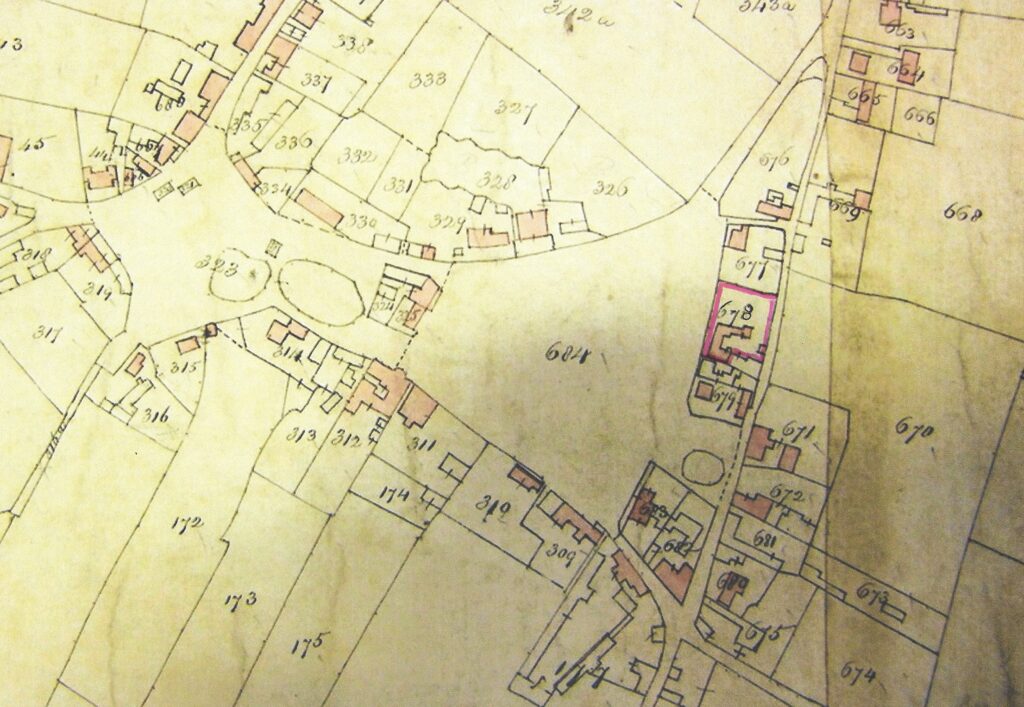
1851
The property was not named Brooklyn House in the 1851 census return and it is not entirely clear who the occupiers were but based on a logical walking order and known adjacent properties in the census lists it seems that the house was occupied by an elderly widow by the name of Matilda Womack and her daughter of the same name. Matilda was 77 and lived on a fixed income from shares or annuities. Her husband had died in 1845 and was previously a farmer from East Somerton. Matilda died in 1852 a year after the census. The 1851 census form is shown below.
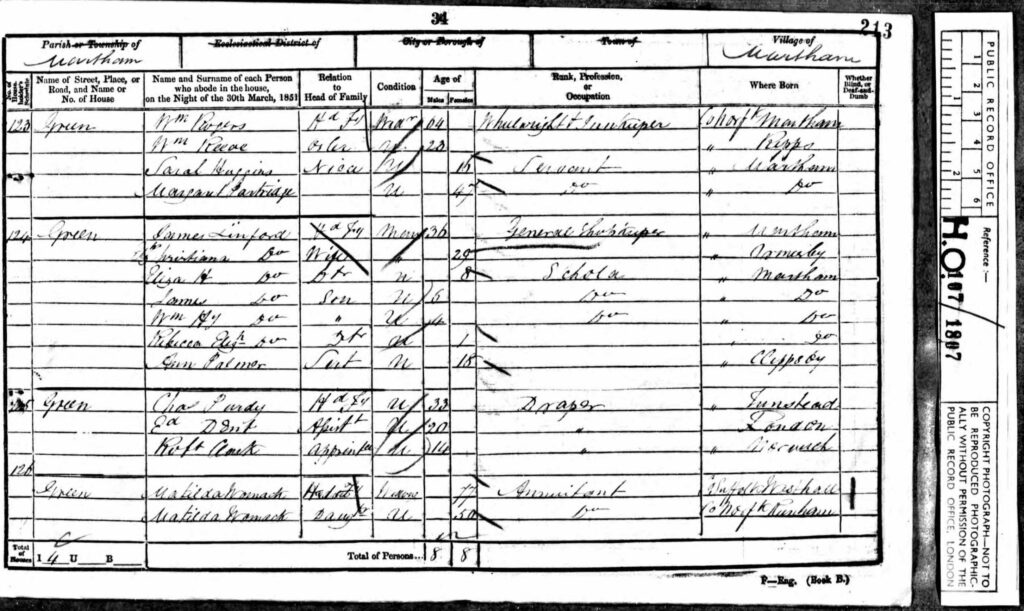
1861
By the time we get to 1861 the house was still not called the name known to us today but was listed in the census as next door to Norwich House and was occupied by Samuel Skoyles who was a carpenter and beer house owner. He was listed as being the occupier of the Royal Oak PH which was in the east end of Brooklyn House. Earlier he had lived at Black Street and by 1871 he had returned there and reverted to being a master carpenter.
1871
The 1871 census return tells us that Thomas William Jay and his wife Elizabeth, nee Hacon, were living in the house. Thomas came from a long line of land owning farmers and in 1871 farmed 340 acres employing 11 men and 7 boys.
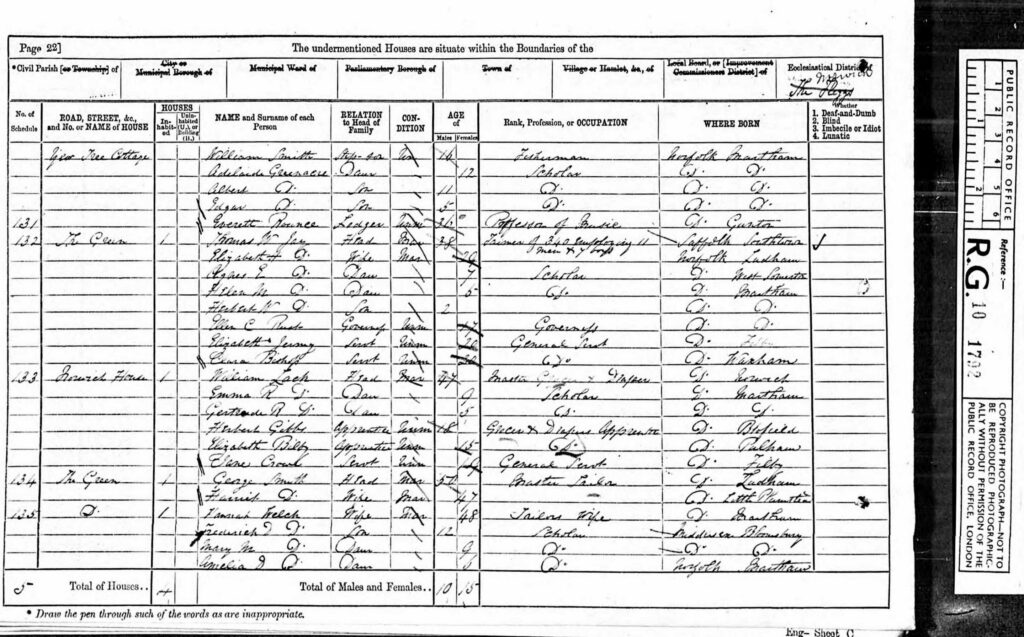
1881
In April 1881, at the time of the census, the house was probably busier than it had ever been and we come across it being publically named for the first time. We don’t know how it got its name but it could have been named, for whatever reason, by Rev. Charles Stovell who was the head of the household and the village Baptist Minister and school master. He was born in London in 1838. He married Elizabeth Saul in 1873; she was born in Norwich in 1845. The 1881 census names the property Brooklyn House with Charles being there with his two daughters and a son. They were Winifred (6); Gertrude (4) & Spencer (3). (His wife, Elizabeth, was not there on the night of the census). In addition there was a 20 year old live-in governess, two servants and nine boys aged from 9 to 15 who were boarders receiving schooling. Charles must have been particularly busy as the present Baptist Church on the north side of the Village Green had only just been opened in 1879. It is also highly likely that Charles was the last minister to preach in the former Baptist building that existed for 78 years next to the Baptist graveyard at what is now Oak Tree Close. He would also have been the first to manage the new church. Later his duties seem to take him to various parts of the country and the family had moved on by the time of the next census in 1891 where he was the Pastor at Chudleigh in Devon. The 1881 census form is below showing the family but most of the schoolboys appear on the following page.

1891
The house was occupied by a Charles A Hardingham, a coal merchant from Great Yarmouth. He was 31 and previously lived in Great Yarmouth in 1871 & 1881. He was married to Jane who was 32 (born Norwich). Three of their children lived with them in 1891. They were twins Nora and Ethel aged 5 and a son Thomas aged 3. They also had a general domestic servant called Ellen Stimpson who was 30. By 1901 they had moved away to Worthing. The 1891 census form for them is shown below.
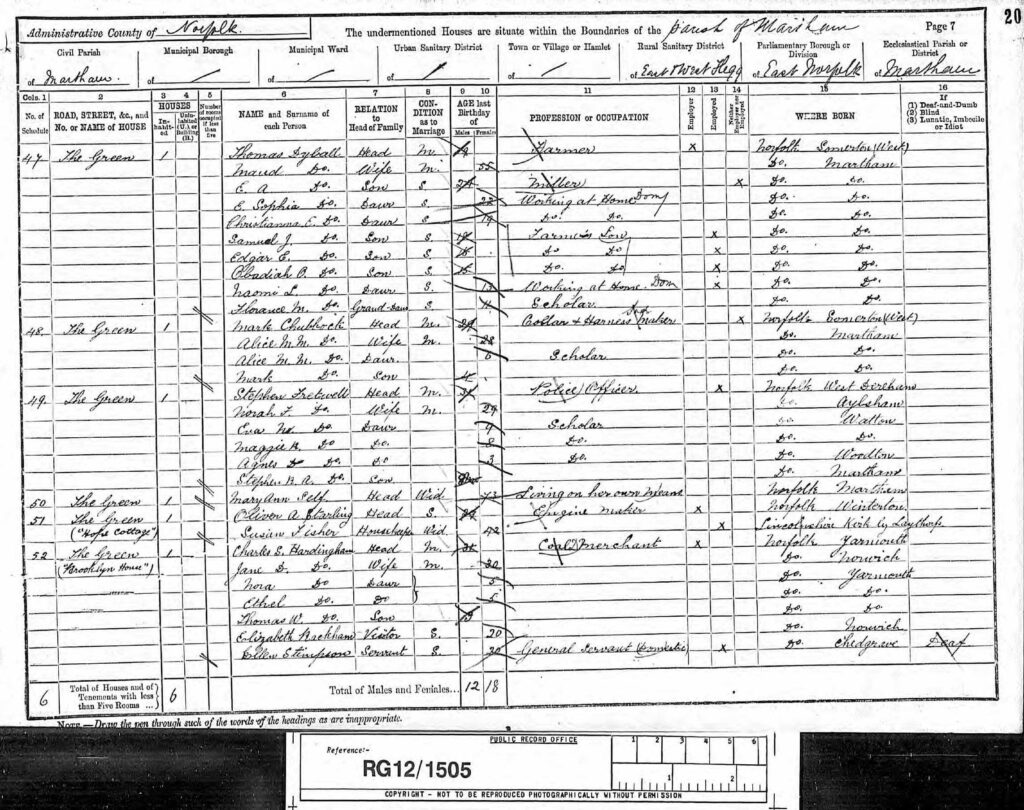
1901 & 1911
The census returns for these years tell us that the house was occupied by Dr. Thomas & Clara Beales. Thomas was born at Hopton in 1860. He married Clara, nee Barnby, in 1888 and he was a medical practitioner and surgeon. They had three children but one, Geoffrey, died at 15 months old and is buried at St Mary’s graveyard. They were also listed as living at Brooklyn House in the 1920 Electoral Register for Martham. Thomas senior died in 1925 and Clara in 1939 at Great Yarmouth so it is possible that they lived at Brooklyn House until at least 1925.
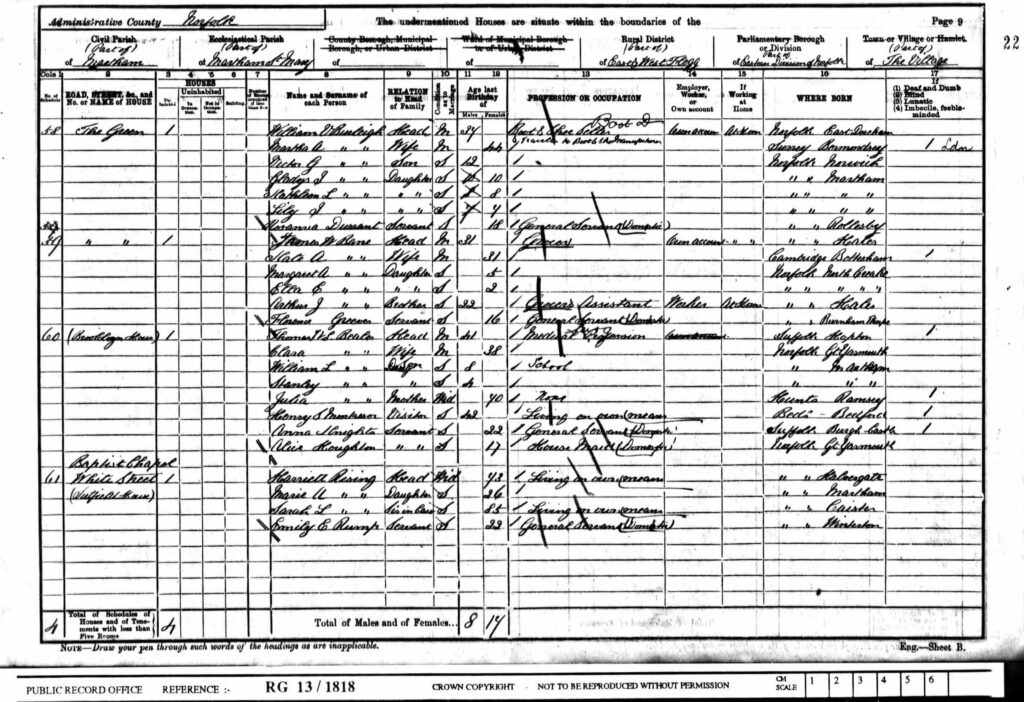


The marvellous photo shown above (kindly provided by David Stretton) shows what is probably a political rally on the Village Green in front of the house. Note the inverted leaf panels above each window are still in place unlike later photos. The date of this photo is unknown but the speaker is quite possible Sir George Edwards (1850- 1933) who was a trade unionist Labour Party politician. He was born in Marsham, Norfolk, the son of a poor ex-soldier who worked as an agricultural labourer. After the Crimean War, when the family’s income was threatened by rising prices, they had to enter the workhouse for a year. He joined the Primitive Methodists and married at the age of 22. His wife taught him to read and write and by 1906 he had forged a political career and founded the Eastern Counties Agricultural Labourers & Small Holders Union later known as the National Union of Agricultural and Allied Workers and became its general secretary. He cycled over 6,000 miles to meetings in the first year and built its membership to over 3,000. This photo could very well be of one of his cycle trip meetings. He became an MP in 1920 for the South Norfolk constituency. He was knighted in 1930.
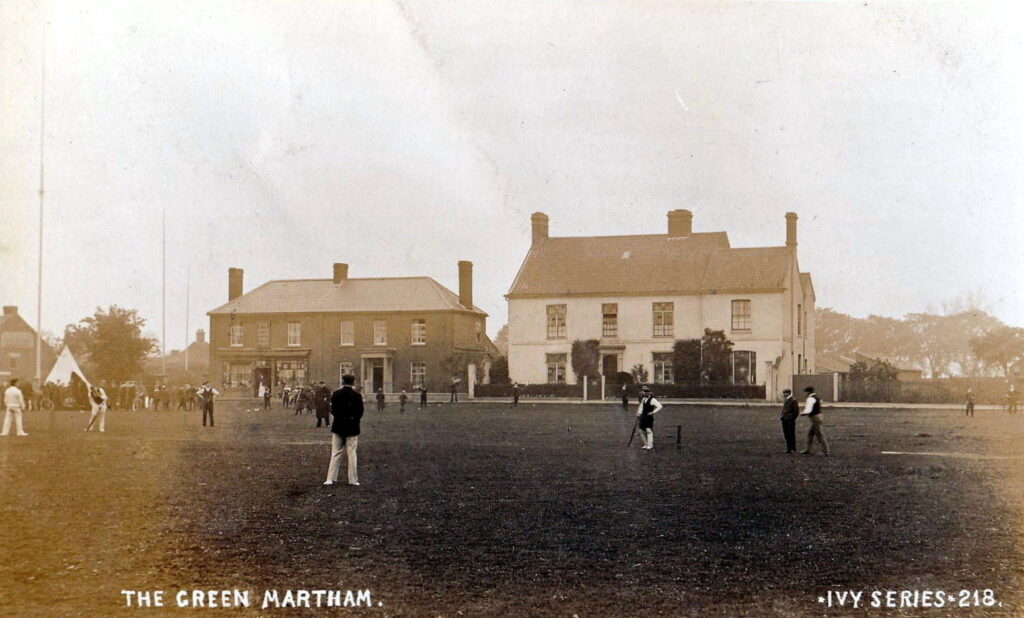
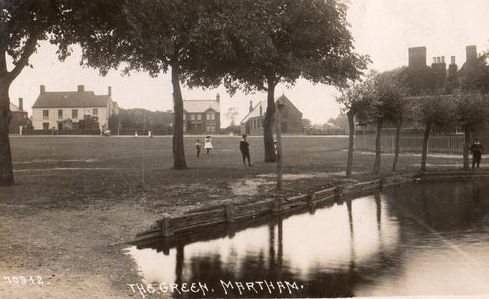
1931
The darkest corners of the house previously only served by candles and oil lamps must have come alive with the supply of electricity in 1931. Here we have a photo of the trench work undertaken to install electricity to the village in that year at the front of the house. It makes the Green look very untidy and also shows the telegraph poles of the time. So perhaps the house not only had the new fangled electric but also telephones.
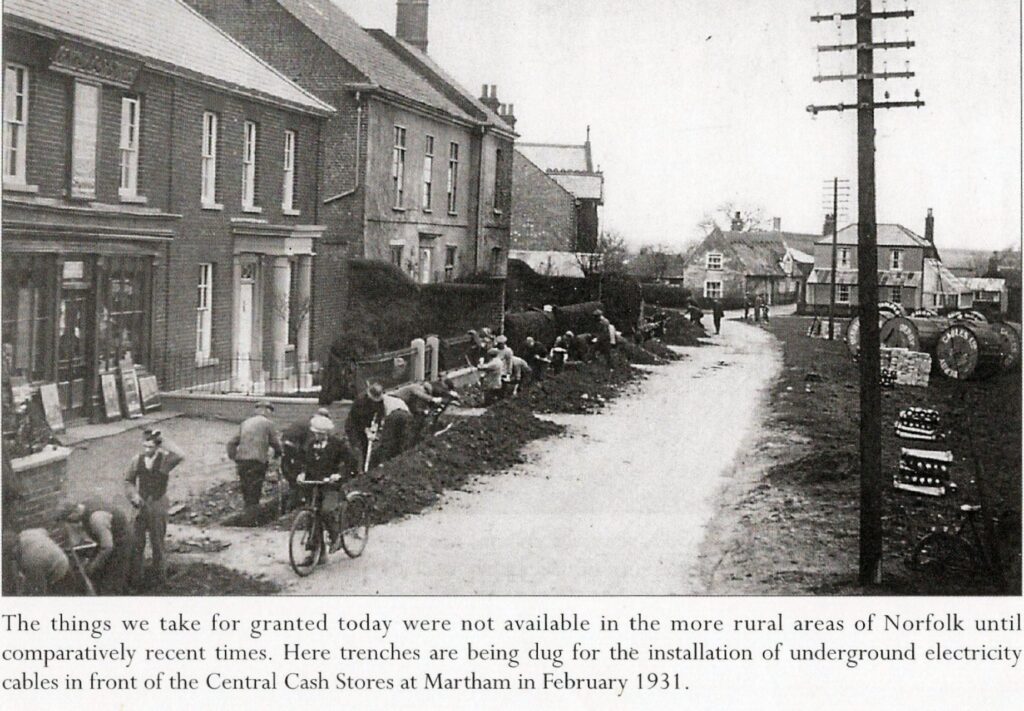
1934 – 1939
In 1939 the nation was preparing for war and a national survey was carried out which shows that the occupiers of the house had changed again and Lieutenant Colonel John Claude Thorp DSO and his family lived there. This is a copy of the 1939 Register entry.
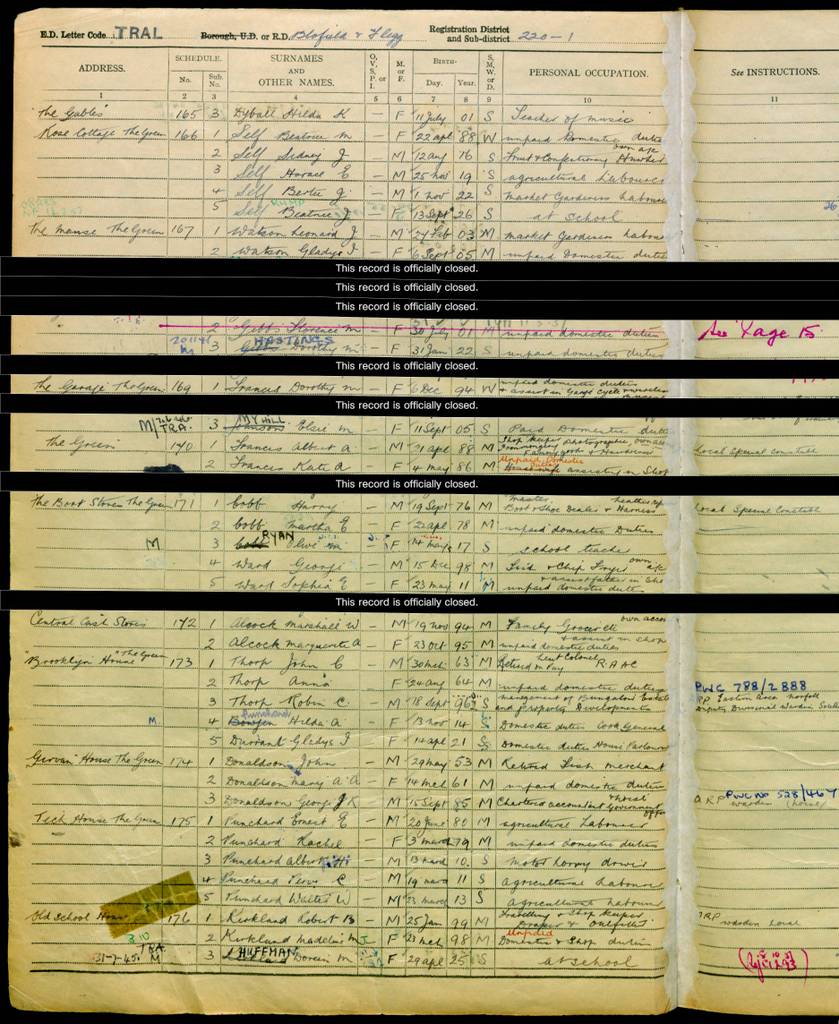
Lieutenant Colonel Thorp was born in 1863 at Chirk, Wales and was the son of a vicar. He became a Colonel in 1883 and was promoted to Lieutenant Colonel in 1906. He retired from the Army Ordnance Department in 1912. He married Anna Rippingall at Langham, Norfolk in 1891 but by 1911 they lived at Shooters Hill Road, Blackheath and had three children. His military duties must have taken them to far off places as their son Kenneth was born in Nova Scotia. In 1934 they were living at Brooklyn House according to the records of a local solicitor. Their occupancy of the house is shown in the official 1939 Register above. John died in 1946 locally and it is possible that he lived at Brooklyn House until his death.

Hedge cutting at Brooklyn House Another photograph of uncertain date but the lovely top lights of the windows have gone and been replaced with plain panes.
The George Family
It is not clear when the George family first moved to Martham but they have been associated with the house for around the last 70 years. Henry William George was a draper in Great Yarmouth in the 1930’s and had retired by 1939. He was always known in the family as Harry and retired, with his wife Gladys, to Martham at about the same time that John Claude Thorp died. Harry & Gladys had married in Great Yarmouth and when they moved to Brooklyn House it was with their two children. Gladys died in 1959 and Harry in 1964 leaving just their son living at the house. His full name was Rex Alan George but he was widely known in Martham respectfully as ‘Mr George’. The once magnificent house entered a sad period as Mr George began to live life as a semi recluse. As the photograph below shows the grounds that once saw garden parities with ladies in fine hats and smart clothes had become overgrown by 1982.
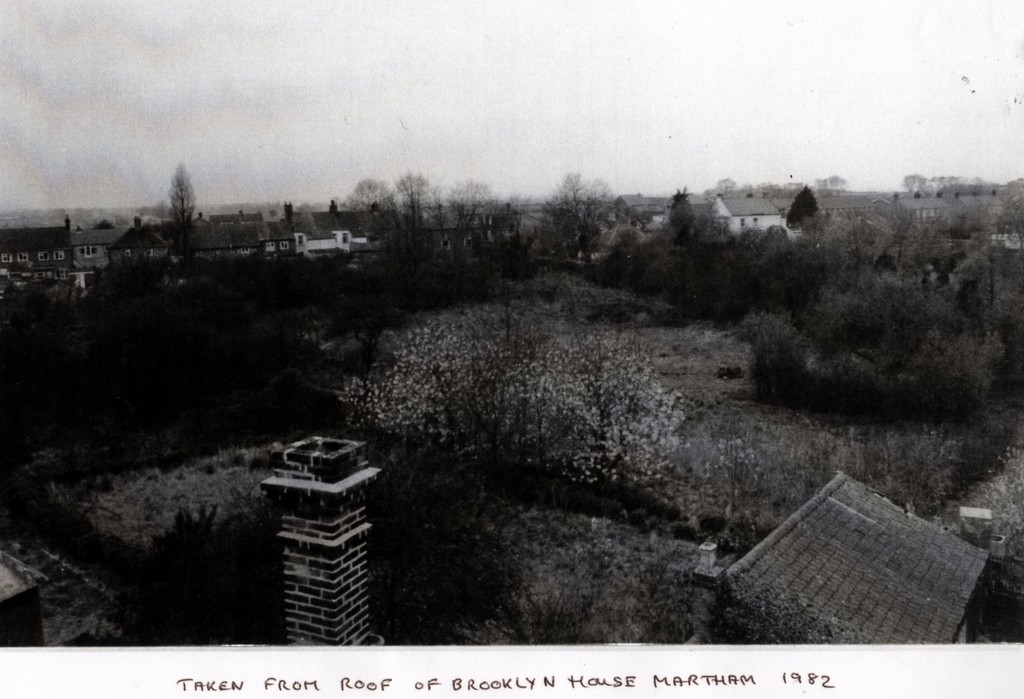
Lloyds Bank
In March 1949 Lloyds leased a small part of the eastern end of the house and opened a bank branch there that remained in use until its closure in August 1988 when it moved to other premises in Black Street. The counter was removed from Brooklyn House and adapted to fit in Black Street by E E Moore builders. Peter Jordan was the manager of Lloyds. The house entered a period of decline as the fabric fell into disrepair it began to look unloved to the extent that it was vandalised in 2015 because some boys thought it was unoccupied and an easy target; they broke many of the windows at the front. Luckily, the local community came together and a working party of young people carried out repairs.
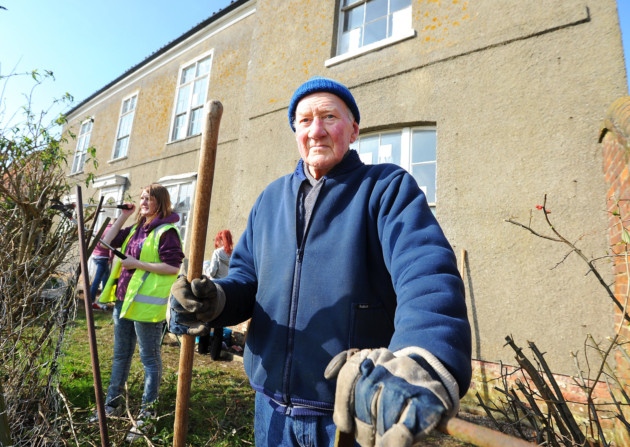
Just before Mr George passed away unexpectedly in 2016 a 1937 Morris 8 Van previously owned by Longs Dairy of Gorleston was discovered in the garage of the house. It was purchased by a local man and restored.
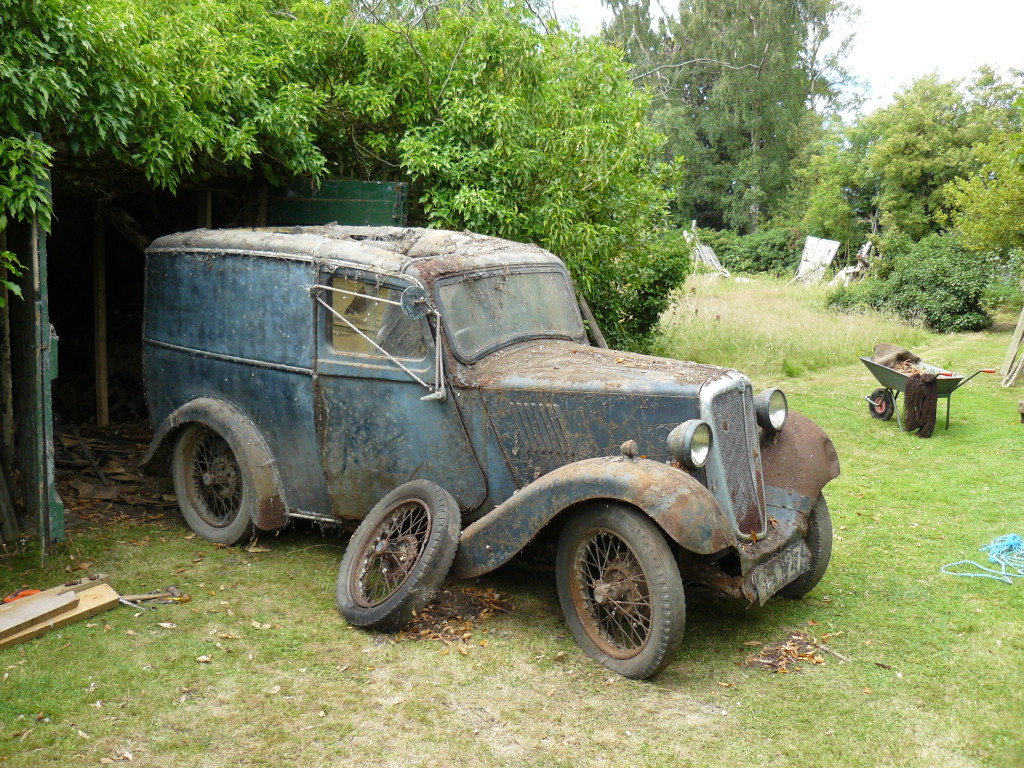
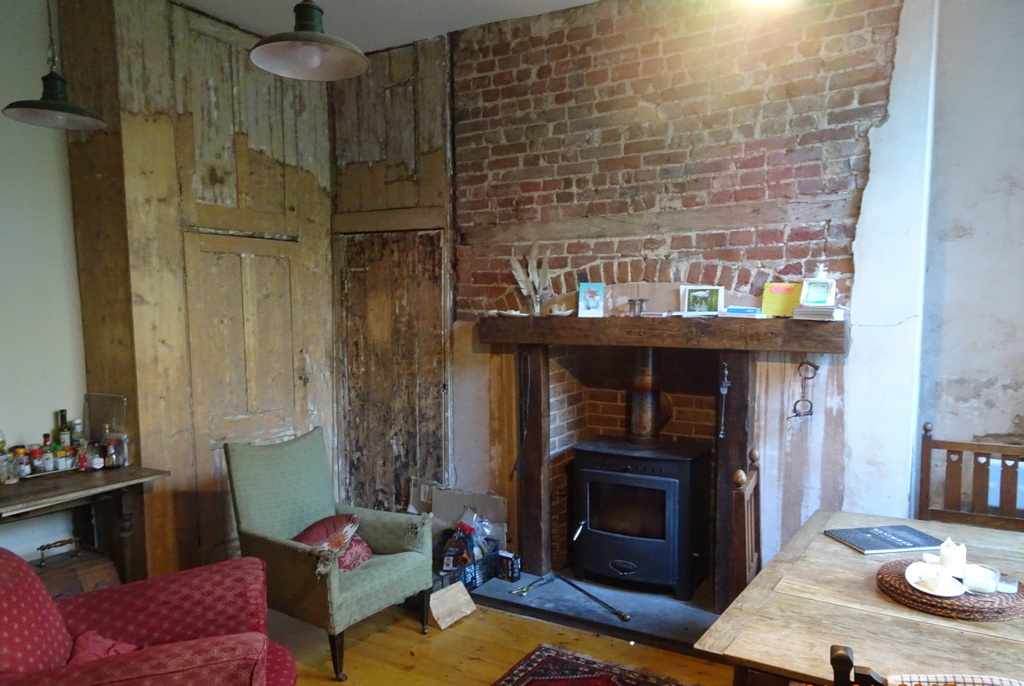
After Mr George died, the new owners found themselves with a time-capsule of a house. It remains much as it was perhaps 80 to 100 years ago (other than some improvements to bathroom facilities) and represents a major challenge to restore with the added dilemma of what to modernise and what to keep, as in many ways the interior is almost a museum piece. The existing kitchen is shown left.
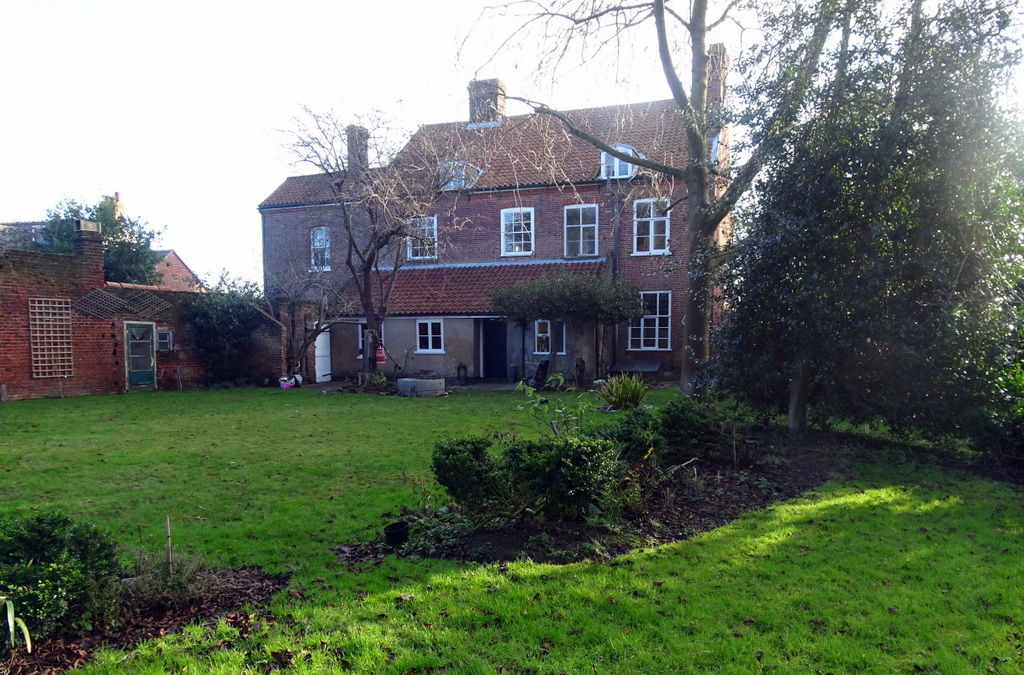
PS: Recent research shows that the building (or at least the part to the east end of the house) was once the Royal Oak Public House. For details of the pub click on its name or find it in the main menu under “Buildings”.
Brooklyn House photo album. Click on any image to see a larger photo and you will then be able to scroll through them using arrows left and right.
